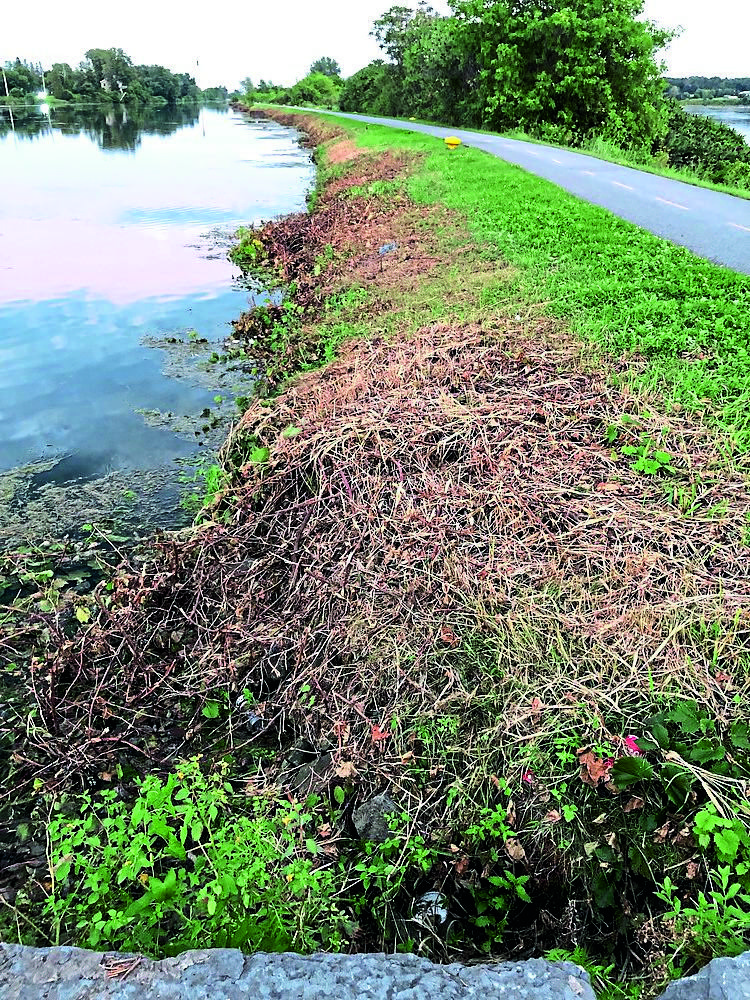Many people are thinking carefully about their impact on climate change – how they are eating, driving, heating, consuming etc. The one area that does not seem to be under any scrutiny is mowing. I’m not just talking about back and front yard lawn mowing but mowing roadsides, along recreation paths, along shorelines, large estate properties and acres of unused public green spaces.
So the question is, why do we love to mow lawns?
Since the Second World War and the rise of suburbia, the well-maintained lawn became synonymous with a caring, hardworking household – a kind of status symbol. Naturally, as humans tend to conclude – if something is good – more of it is better, so now mowing large areas seems to be synonymous with being a responsible property owner – both private and public.
In this region, I have noticed that more and more areas of public lands being mown – along the highways, along the St Lawrence River and recently along public bikeways. Most of the areas now look brown, bare and ugly compared to the beautiful wild flowers and grasses that grow naturally. I’m told that it is to control wild parsnip and I can certainly understand the public safety impact within one or two metres of the bike path as well as in well-used neighborhood parks and sports fields, but beyond that one could argue that mowing acres of area that no one sets foot on is not a positive trend. I have also heard the argument that mowing is equated with care for the land but the opposite is true. Eliminating wild meadow areas reduces the food for pollinators and, of course, the use of fuel for mowers contributes to climate change. The riding mower and huge mowing equipment has made it all too easy to endlessly expand areas that are mown.
On the home front, we use more synthetic fertilizers and pesticides on our lawns than the same area of cropland and lawns also require a lot of water. Not only does this impact local wildlife, these chemicals can end up in our own drinking water. A pond near to me ends up being full of algae each year partly because people mow right down to the water edge and rain and irrigation washes the fertilizers into the pond. In addition, with the shoreline vegetation gone, the normally shady water edge heats up, making it hard for fish to spawn. The manufacture and use of these chemicals require large amounts of fossil fuels so, along with the gas that is used to power the mowers, there is a huge impact on climate change.
There is a need to re-imagine this mowing trend and its impact on the environment. Every home owner, municipality, agency and business needs to assess exactly how much mowing is absolutely necessary. As a public, we also need to ask how much mowing contributes to our carbon footprint that we are trying to reduce by 10% per year.
We also need to equip people with the reasons why they need to mow less area so they can respond to the public and neighbors who raise a huge fuss when areas are left wild. Only then will we be more conscious about where and how much we mow. Our future depends on this.
The David Suzuki Foundation has some great suggestions about How To Get Your Yard Off Grass – helping to reduce water consumption and increase pollinators.




